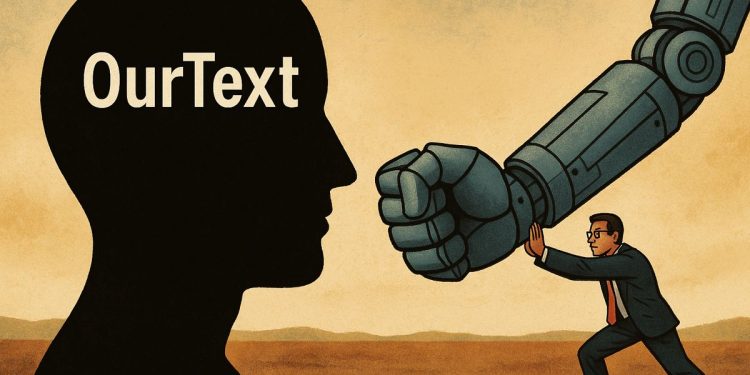Organizations that succeed with generative AI focus on building a strong AI culture. This means leaders clearly communicate their AI plans, teams are allowed to experiment and even fail, and employees get personalized training and coaching. These steps help people feel excited and confident about AI, leading to more creative ideas and better results. Companies with this culture see more AI projects succeed and make more money from their AI investments.
What cultural factors drive successful generative AI adoption and ROI?
The most successful organizations scale generative AI by fostering a strong AI culture with three key factors: clear leadership communication, team “failure budgets” to encourage experimentation, and personalized upskilling with coaching. These strategies lead to higher employee engagement, optimism, and tangible revenue impact from AI investments.
Organizational culture is emerging as the single strongest predictor of how quickly and effectively companies can scale generative AI. While CIO budgets for GPUs and cloud credits continue to climb, 2025 data shows that the difference between pilot projects that stall and those that deliver revenue impact is almost entirely cultural.
The culture gap in numbers
| Factor | High-performing AI culture | Typical organization |
|---|---|---|
| Leadership communicates clear AI strategy | 83 % | 17 % |
| Frontline employees using Gen AI weekly | 51 % | 39 % |
| Employees optimistic about AI impact | 74 % | 21 % |
| Revenue increase ≥10 % from Gen AI | 51 % SMBs | <20 % large firms |
Sources: Perceptyx AI Cultural Report, SHRM 2025 Culture & AI Study
Three cultural accelerators observed in 2025 winners
-
1. Leadership-driven clarity, not memos*
Companies like Randstad and KPMG now run monthly “AI jam sessions” where senior leaders discuss real use cases, failures included. Google Cloud case studies show this approach cuts employee resistance by 38 % within one quarter. -
2. Failure budgets for teams*
Firms with explicit “failure allowances” see 2.4x more AI use cases reach production. AMS, a global recruitment firm, credits its 24/7 AI candidate engagement platform to a policy that reimburses teams for cancelled pilots if post-mortems are shared company-wide. -
3. Personalised upskilling*
74 % of organisations are investing in targeted upskilling, but only those pairing training with in-person coaching report >60 % weekly Gen AI adoption by frontline staff. The St. Louis Fed found employees receiving five or more coached hours saved 5.4 % of weekly work time.
Practical playbook for 2025
| Week 1-2 | Week 3-4 | Month 2-3 |
|---|---|---|
| CEO & direct reports publish a one-page AI intent statement | Launch three pilot teams, each with a $10 k “failure budget” | Run peer-led demo days; share what did not work |
| Survey employees on AI anxiety and skill gaps | Pair every pilot participant with an “AI buddy” from a different function | Expand training to entire department using best pilot stories |
Early indicators you’re on track
- Pulse surveys show a 15-point drop in “AI job loss” anxiety.
- Number of voluntary AI experiment proposals doubles.
- IT tickets shift from “access requests” to “how do I automate this workflow?”.
Culture is no longer a soft factor. 2025 data shows it is the primary technology enabler for generative AI at enterprise scale.
FAQ: How Culture Turns Generative AI into Competitive Advantage
3. Which cultural traits most strongly predict fast, high-ROI AI adoption?
Data from 2024-2025 shows that adaptability is the single strongest predictor (SHRM, 2025). Organizations that rate highly on three dimensions – empowering teams to experiment, normalizing failure as learning, and leading with an explicit AI strategy – launch Gen AI pilots 2.4× faster and report 51 % higher measurable ROI within six months (BCG, 2025). A World Economic Forum case study of AMS, a global recruitment firm, found that after its leaders publicly shared early missteps from an AI chatbot project, candidate-engagement rates rose 34 % and time-to-hire dropped 18 %.
4. Why do frontline employees lag behind leadership in Gen AI usage, and how can culture close the gap?
Only 51 % of frontline employees use Gen AI weekly, compared with 92 % of executives (BCG, 2025). The gap is cultural, not technical: employees without at least five hours of formal training and on-the-job coaching are four times less likely to trust or use the tools. Culture closes the gap when:
- Leaders co-create AI use cases with frontline teams instead of imposing top-down mandates.
- Companies reward learning milestones, not just deployment metrics. Randstad’s “AI champions” program gave public recognition (not cash) for sharing small wins, lifting daily usage from 28 % to 63 % in eight weeks.
5. How should leaders measure the cultural health of an AI initiative?
Track two complementary dashboards:
| Human-Culture Metrics | AI-Performance Metrics |
|---|---|
| % of employees trained ≥5 hours | Cycle time for AI pilots |
| Trust index (pulse surveys, 0-100) | Revenue or productivity uplift |
| # of failed experiments openly shared | Model adoption rate |
A McKinsey 2025 study shows organizations that review both dashboards quarterly sustain 39 % higher Gen AI usage two years later.
6. What is the first practical step a mid-size firm should take to embed an AI-ready culture?
Start with a micro-learning sprint – a two-week, cross-functional pilot involving 5 % of staff. Provide:
- A 3-hour hands-on workshop.
- A clear “failure budget” allowing one misstep with zero blame.
- A public debrief led by the CEO on lessons learned.
According to Workday’s 2025 survey, firms running such sprints see double the year-over-year Gen AI adoption compared with those launching large-scale rollouts without a cultural warm-up.
7. How does transparent communication about AI risks actually improve ROI?
When leaders proactively discuss ethical risks, employee trust scores rise an average of 18 points (Google Cloud case study, 2025). Higher trust, in turn, correlates with:
- 27 % faster user acceptance testing cycles.
- 22 % fewer compliance escalations because employees surface issues early.
The net effect is a 10-15 % cost saving per pilot, turning risk transparency into measurable financial upside.



















